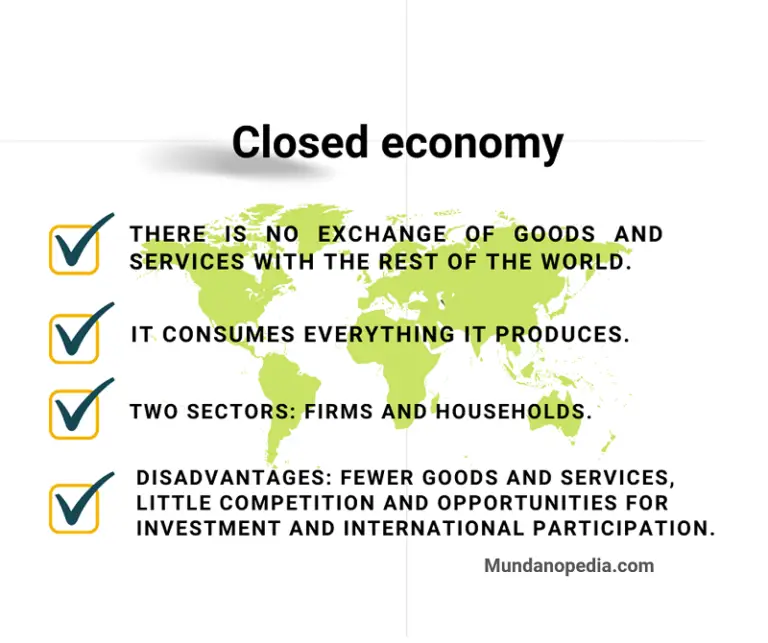Closed Economy: Definition, Sectors, Advantages & Disadvantages

Closed economy
A closed economy is an economy in which there is no contact with the outside, it doesn’t trade with other countries, and consumes everything it produces. It’s an economic model created by the economist Paul Samuelson that explains how the flows of money and goods work in a system without international trade. It’s the opposite of the open economy.
Contents
Graphic representation of the closed economy model

Characteristics of a closed economy
A closed economy has two sectors, two markets and two flows or currents.
Two sectors (companies/firms and households or families)
Firms acquire the factors of production of the families and produce goods and services, then the families, with their income, buy this production.
The income of the households and the production costs of the companies are equal. The consumption of families becomes the income of firms.
Two markets (Products and factors of production)
The product market at the top of the graph, where consumer demand and business supply determine the price of goods and services, and the other market is for factors of production (bottom of the graph).
It’s the demand of the company and the supply of the families that determine the prices of the factors of production (Wage, interest, and rent). Demand and supply are also balanced because the production cost and the income of the families are equal.
Two flows or currents (of goods and money)
The real flow of factors of production that goes from families to firms that transform them into goods and services and then the company offers them to families.
And, the monetary flow that rotates in the opposite direction, which is the income of firms from the sale of products and that of families from the factors of production.
This model is characterized by a static balance, because any alteration in any of its components causes a reaction in the others that will restore this balance. Economic problems such as “what to produce” are resolved in the market for factors of production, “for whom to produce” in the product market and “how to produce” in the business sector according to the characteristics of the goods and services.
Advantages and disadvantages of a closed economy
One advantage is less competition for domestic producers because foreign production can affect domestic production that doesn’t have the same resources or technological advances.
The disadvantages are fewer goods and services, little competition and opportunities for investment and international participation.
See also: Open economy
See also